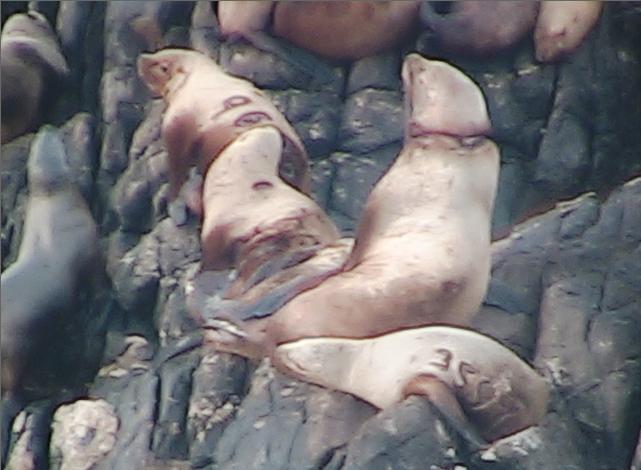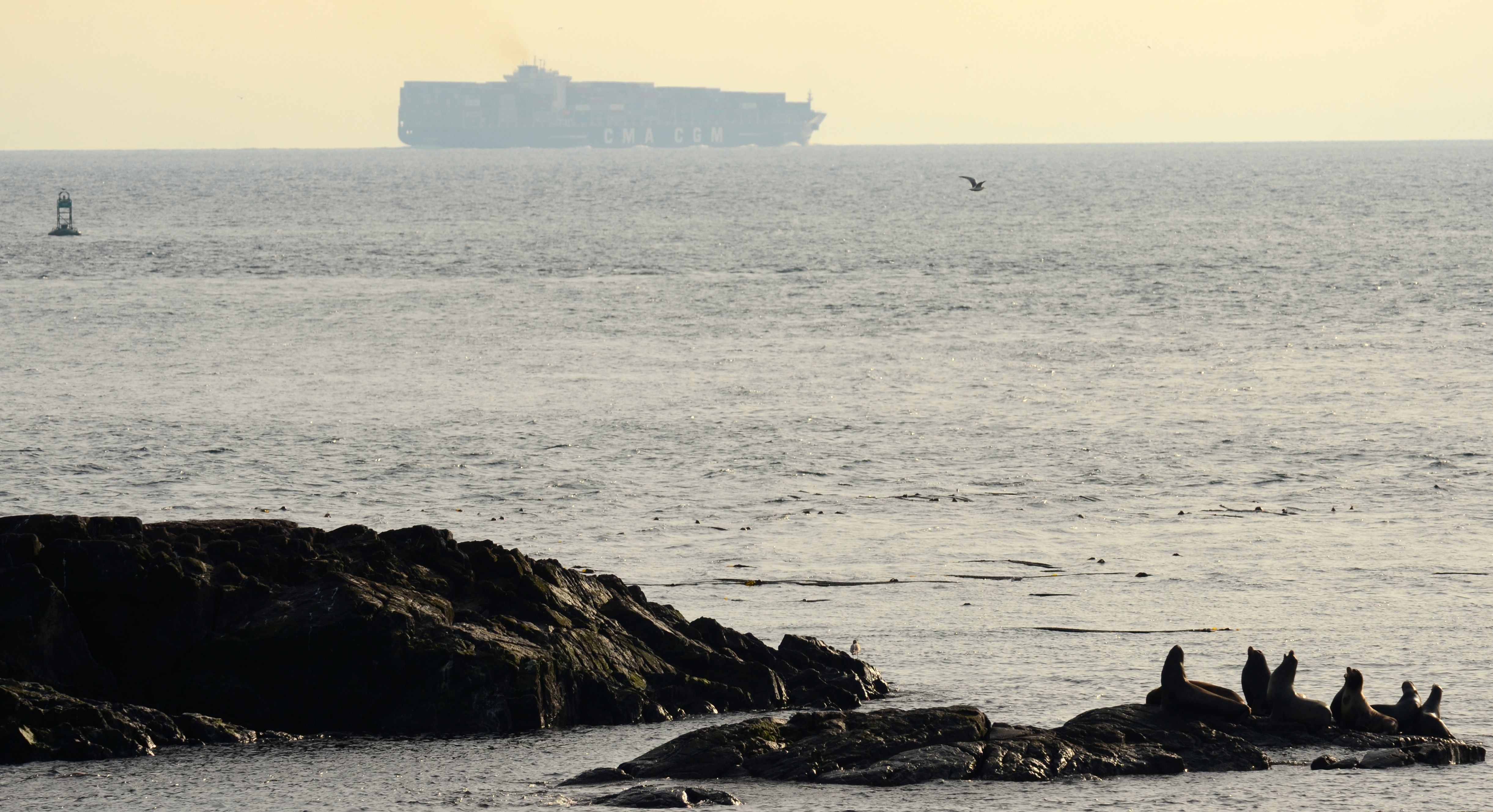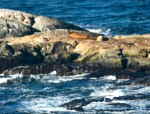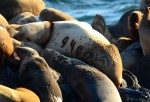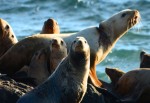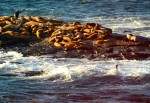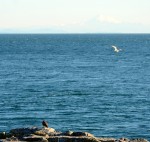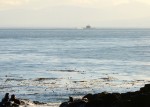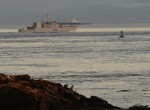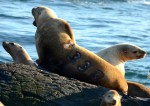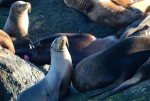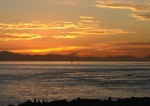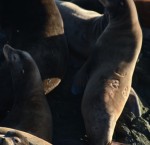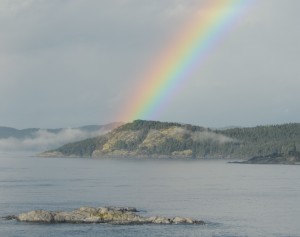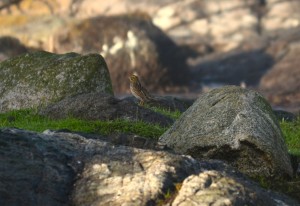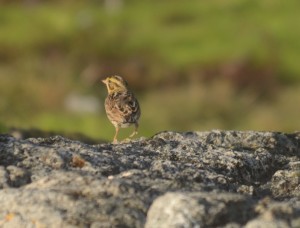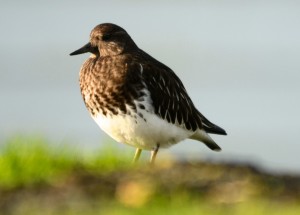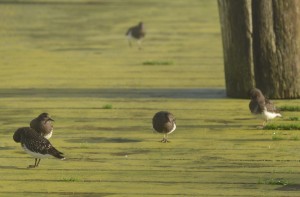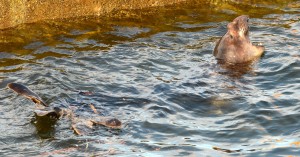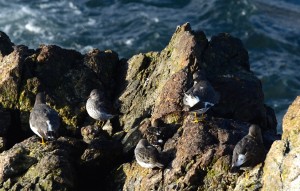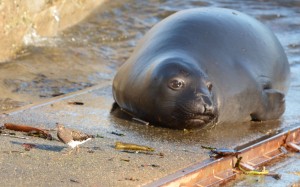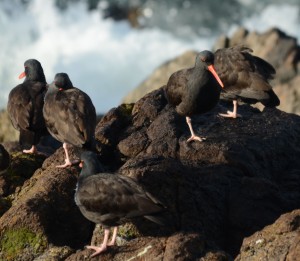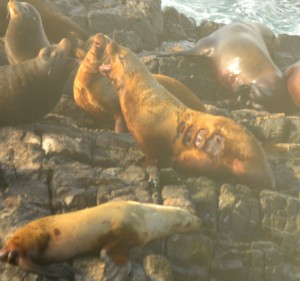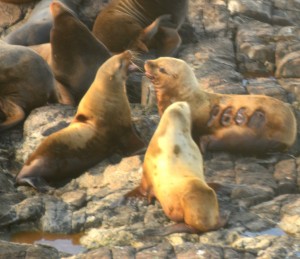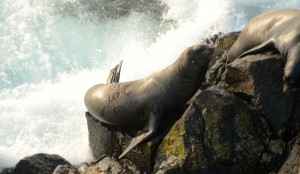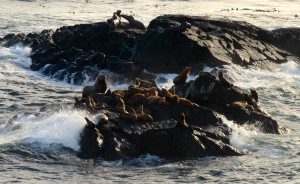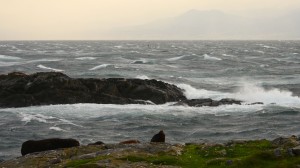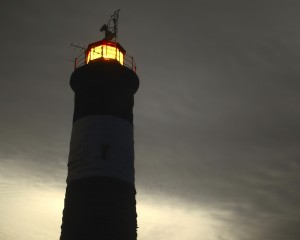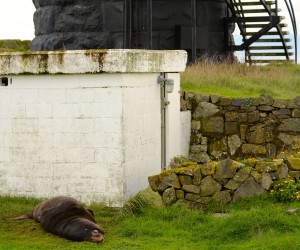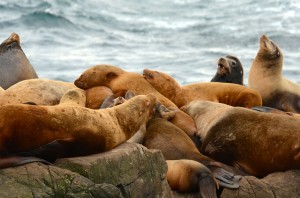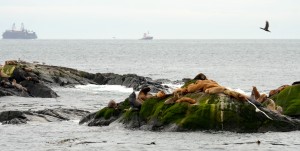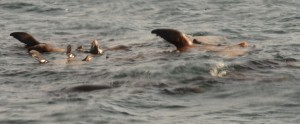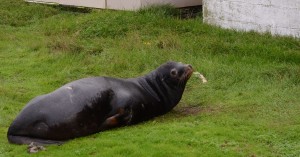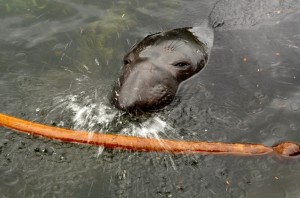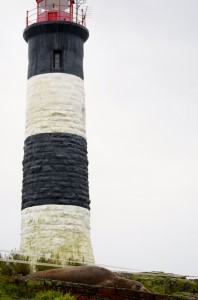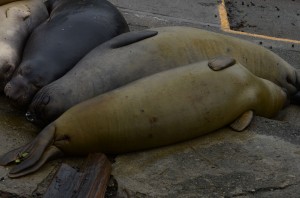The barometer continued to drop slowly from 1023 to 1018 hPa. The wind continued to blow between 8 and 18 knots from the northeast. There was a difference in the weather today, compared to the clear sunny skies that have been the usual for the past week. Low clouds hung over the Juan de Fuca Strait for most of the day. There were occasional breaks of sun in the late morning and early afternoon. The whitecaps this morning calmed right down in the afternoon, making the sea the calmest it’s been for the past few weeks.
There was one recreational boat seen this morning in the southern part of the reserve.
Pam Birley, from the UK, sent two photos of sea lions that she captured on Camera 1, located at the top of the lighthouse. Pam’s photos show two branded sea lions that have never been spotted at Race Rocks, as far as I can tell. See the photos below. Thanks Pam!
The desalinator was run today to top up the fresh water cistern. The solar panels aren’t soaking up as much energy, due to the clouds. The generator was run longer today to help out the energy intensive desalinator.
- Steller sea lions are hauled out on the southwest side of Race Rocks. The sea lion with the brand 420Y was born in 2005 near Rogue Reef, Oregon. This photo was captured this morning on Camera 1 and submitted by Pam Birley, from the UK.
- California and steller sea lions are hauled out on the southwest side of Race Rocks. The california sea lion with the brand 3597 was born in 1995 on San Miguel Island, California. The large steller in the middle has a plastic strap wrapped around its neck and digging into its flesh. This photo was captured this morning on Camera 1 and submitted by Pam Birley, from the UK.
- The 335m long cargo ship CMA CGM Bianca passes a few kilometres southeast of Race Rocks.


